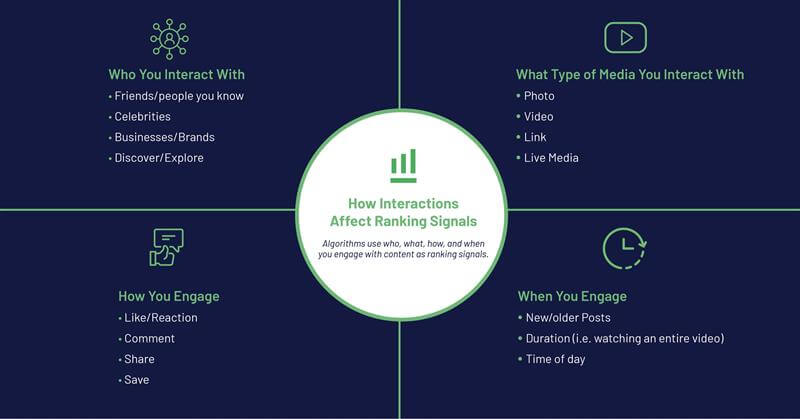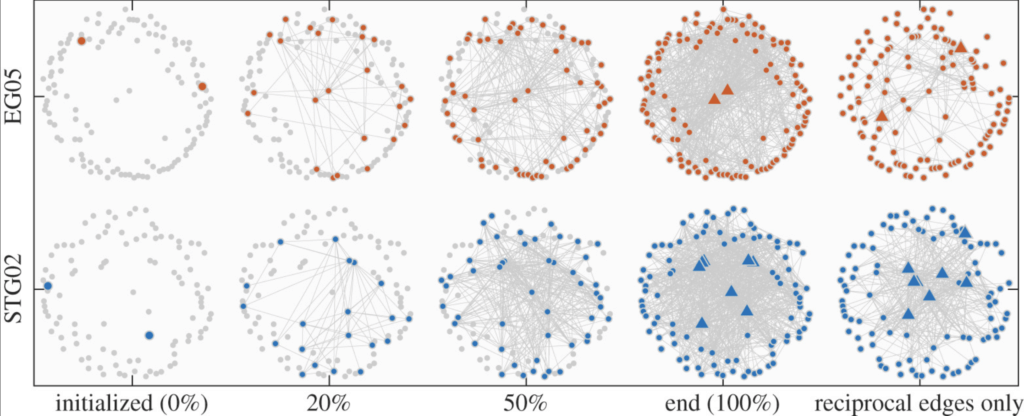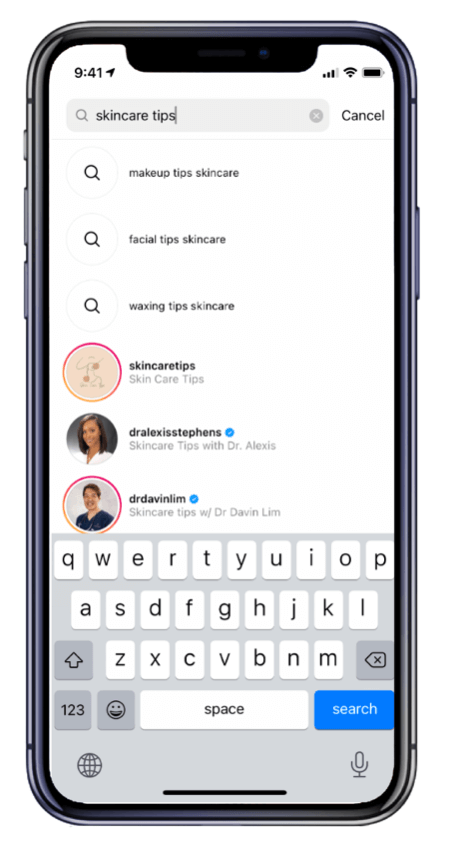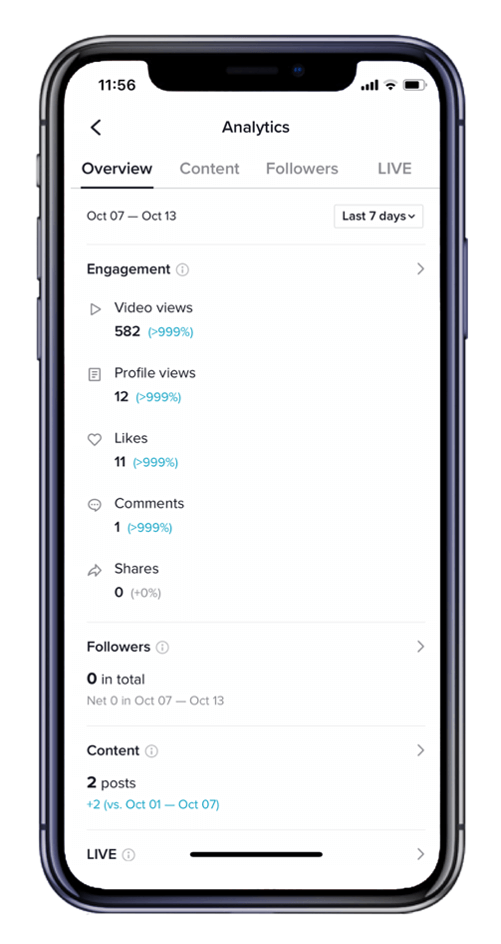
From dancing to “Savage” by Megan Thee Stallion to repurposing iconic audio bits from the Kardashians, viral TikTok, and Instagram, videos are endlessly viewed, discussed, and shared. Whether we’re sending them to friends, remixing popular videos, or rewatching them in our spare time, we can’t get enough of this content. Ever wonder why specific videos end up on your Instagram feed or TikTok For You Page? It all comes down to each social platform’s unique algorithm. To learn how these data sequences operate and get tips on improving your rank in social search, continue reading!
So, What Exactly is An Algorithm?
While it may sound like a kind of dance movement, in its simplest form, an algorithm is an instruction manual for a computer to complete a particular task. Computer algorithms function based on an input and output procedure and begin to work when an input, usually a piece of data, enters the computational process. While computing, the data entered goes through each instructional step in the algorithm, involving arithmetic, decision-making, and repetition, generating an output. For instance, when analyzing a search engine’s algorithm, the input is the search query that goes through each algorithm step until a relevant output, the search result, is found.
What Role Do Algorithms Play in Social Rank and Search?
In social media, algorithms maintain order and help rank search results. Each social platform has a unique algorithm that dictates your rank in social media ads and content placement (i.e., feeds and search results).
Many social platforms avoid sharing detailed information about their algorithms to stay competitive. However, growing skepticism about social networks’ agendas has prompted many platforms to share basic information about their algorithms.
Why is Learning About a Social Platform’s Algorithm Beneficial?
Gaining insight into the nature of these algorithms better equips users to craft content that will work in the algorithm’s favor, increasing your rankings and helping to improve content performance.
Different best practices are required to produce optimal rankings based on the unique nature of every platform’s algorithm. Below are how the algorithms of social powerhouses Instagram and TikTok function and how to optimize your content to generate better rankings.
Diagram by 2019 Weibo Study on Wikiwand.
Understanding the Impact of Filter Bubbles on Content Ranking
Have you considered another person’s social media feed and wondered why it didn’t resemble yours? This difference is a result of filter bubbles.
Initially coined by Eli Pariser, an Internet activist, a filter bubble is an information isolation created by algorithms. After tracking the types of content we interact with, algorithms present us with more content than we’ve expressed interest in and are likely to consume—a filter bubble forms wherein certain information and perspectives are excluded.
Because algorithms filter and suggest content without our permission, many people don’t realize they’re in a filter bubble. Moreover, as filter bubbles have ingrained themselves in all parts of the Internet, it is nearly impossible to escape them. For instance, filter bubbles impact the content we see on social media and the types of articles featured on news sites, results on search engines, and even shows displayed on Netflix.
Improve Your Rank in Social Search with These Tips
Having established a basis for how algorithms and filter bubbles function, we can now dive deeper into the inner workings of search and rank on social media platforms. Additionally, you’ll learn specific tips on improving your rank in social search!
How Instagram’s Algorithm Works
Instagram seeks to show as much content to as many users as possible within 24 hours to encourage interactions (i.e., comments, shares, likes, and further posting). Based on this, its algorithm considers multiple factors when ranking content, including, but not limited to, relevancy, connection, engagement, and content popularity.
With various factors to consider in its ranking system, how does one algorithm do it all? According to Instagram’s head, Adam Mosseri, Instagram doesn’t use just one algorithm. Instead, It uses multiple algorithms, classifiers, and processes to maintain order on the platform and rank content.
For instance, different platform aspects, such as Feed, Explore, and Reels, include customized algorithms depending on how people use these features. As Mosseri expressed, “People tend to look for their closest friends in Stories, but they want to discover something entirely new in Explore.” As a result, Instagram ranks content differently based on what part of the platform it populates.
How Instagram Ranks Feeds and Stories
Instagram’s Feed and Stories feature recent posts shared by people you follow, except for ads. As outlined by Mosseri, the most important ranking signals for Feed and Stories are information about the post, information about the user who posted, user activity, and user history of interacting with other users.
How Instagram Ranks Explore
The Explore feature consists of photo and video recommendations for users from Instagram, developed to help users discover new content. Instagram references content a user previously liked, saved, or commented on to source this recommended content. The key signals Instagram uses to rank Explore are information about the post, history of interacting with the user posting, user activity, and poster profile information.
How Instagram Ranks Reels
Designed to entertain users with content from accounts they don’t already follow, Reels follows a process similar to Explore. The signals hierarchy for Reels is user activity, history of interacting with the user posting, information about the Reel, and poster profile data.
Tips for Optimizing Content and Discoverability on Instagram
Improving your ranking on Instagram and working with its algorithm requires adhering to several best practices. These include a consistent posting cadence, using new features as they’re added to the platform (e.g., Reels), incorporating relevant hashtags, releasing content when your audience is active, and interacting with your audience in comments on your post and theirs.
As Instagram continues to expand its search function to find content, such as adding general keywords to its search functionality in November of 2020, optimizing your content for Insta search is increasingly important. While ads are undoubtedly helpful for increasing discoverability and content performance, search engine optimization is the only way to organically connect with people who show an active interest in your content or business.
It’s essential to identify your keywords and KPIs, optimize your bio and post descriptions (e.g., captions and hashtags), and add alt text to optimize your account for search. Following these best practices will improve your discoverability by ranking you higher in Instagram search results. In turn, you can generate more engagements and acquire more followers.
Further working to improve search efficiency on Instagram, Mosseri mentioned that Instagram intends to incorporate a “full search results page experience.”
How TikTok’s Algorithm Works
Unlike Instagram, TikTok consists purely of video content and doesn’t rely directly on follower count or content performance for its rankings. Instead, as explained by TikTok in a 2020 press release, its ranking signals are based on a content recommendation system influenced by user interactions, video information, and device and account settings.
Additionally, TikTok weighs these factors based on their perceived value to a user and then determines the likelihood of a user’s interest in other pieces of content. For instance, a strong indicator of interest is a user watching a video in its entirety, which would receive greater weight than a weak indicator, like the viewer and creator in the same region. As a result, each user’s For You Page is unique and includes content based more on individuals’ interests than popularity.
Tips for Optimizing Content and Discoverability on TikTok
There are several recommendations to consider to increase the likelihood of landing on more users’ “For You Page” and receiving more engagements. Firstly, using a TikTok Business or Creator account provides access to metrics and insights (i.e., audience demographics, audience activity) that can inform your TikTok strategy. For instance, knowing your audience and when they are active will help you customize your content to their interests and post when they are most active. As a result, your content is likely to experience stronger performances.
Another tip is locating subcultures on the platform that will likely engage with your content. Tapping into existing communities is a beneficial way to amplify your content to ideal audiences.
Additionally, it’s crucial to begin videos with attention-grabbing content. On TikTok, fortune favors the bold who dive into videos with striking content and captivate users’ attention.
While TikTok primarily focuses on visual content, captions play an essential role too. With only 150 characters, including hashtags, captions should be concise, engaging, and express why users should stop scrolling and watch your video. Many evoke curiosity, often by using a question. Pulling users in with visual and textual queues helps boost the algorithm’s engagement and completion ranking signals.
As a platform with an endless content stream, post high-quality videos with good lighting, decent audio, vertical format, and built-in effects, and edit to 12-15 seconds to keep viewers engaged. Videos that include popular or trending songs are another key recommendation to land on users’ “For You Page.”
According to a study conducted by the research group Flamingo, 21% of TikTok users expressed that they felt more connected to brands that comment on other users’ posts. Given this, it’s vital to respond to comments on your content and interact with other users’ content to increase engagement signals to the algorithm.
To continue boosting your content and land on more users’ “For You Page,” incorporate hashtags like #fyp, #foryou, and #foryoupage. To find trending hashtags, open the Discover tab on the app and tap Trends. In addition, search for hashtag challenges to find new ideas for content.
How A New Indexing Deal between Google, Instagram, and TikTok Could Impact Social Content Discoverability
Google is considering a new indexing deal to improve how users can discover Instagram and TikTok video content. Currently, searching for Instagram and TikTok videos outside of these platforms is somewhat of a challenge. While many of us turn to Google for our search needs, TikTok and Instagram videos appear in the results. More often, videos from YouTube, which Google owns, populate the search results with lower-quality copies or rip-offs of TikTok and Instagram videos. These owned connected platforms impact your organic visibility, considering Google’s N-E-E-A-T standards.
How Google Intends to Fix the Findability of Instagram and TikTok Videos
The difficulty of discovering TikTok and Instagram videos may soon be a thing of the past. Currently, Google is discussing indexing its video content in search results with Facebook and ByteDance, the respective parent companies of Instagram and TikTok.
If Google, TikTok, and Instagram agree to index video content, it will become searchable on Google. This means we can say goodbye to endlessly sifting through feeds to find videos on these platforms.
It is likely to resemble the partnership between Google and Twitter, established in 2015, in which Twitter granted Google access to many tweet data for indexing. However, before gaining access to this data, Google could not categorize and rank individual tweets in search results.
Why Might This Indexing Deal Not Happen?
Supposing TikTok and Instagram follow suit, video content from these platforms will appear in Google search results. While these platforms could potentially gain more viewers and engagement by making their video content discoverable on Google Search, there are deterrents to granting Google access to their data as well. For instance, TikTok and Instagram share the same short-form video audience as the Google-owned platform YouTube. As a result, sharing their data with Google could intensify competition between these platforms, which may hinder a deal from being made.
If we compare this deal to Google and Twitter’s 2015 agreement again, Twitter’s incentive for granting the search company the ability to categorize tweets is an annual licensing fee paid to Twitter by Google. If they agree to partner with Google, TikTok and Instagram will likely be compensated similarly.
Google seeks out these deals to expand its longevity and sustain its relevance. Indeed, indexing video content from these social platforms is especially important as it encounters new competition and regulations. For example, as TikTok and Instagram videos grow in popularity, subpar YouTube results for these videos on Google searches are less likely to appease users. In effect, Google will become less trafficked for video content and, thereby, less relevant.
What Is to Be Gained from Ranking and Indexing Instagram and TikTok Videos on Google?
Acquiring data from these video platforms to rank and index on Google Search will positively affect the search engine. For instance, the more content Google has to categorize, the longer it will remain a leading search engine. Moreover, signing a deal with these video content connoisseurs may transform Google into a top destination for textual and short-form video content.
Beyond Google and the social platforms’ potential benefits from this deal, users who create the videos could also benefit from having their content made discoverable on the search engine. Such advantages include, but are not limited to, more visibility, traffic, and engagements.
Conclusion
While it is uncertain if TikTok and Instagram will agree to allow Google to index their video content, the interlinking of social with search continues to grow in demand. When crafting your content for Instagram and TikTok, revisit this blog to incorporate our tips for improving your rank in social search.
Seeking to improve your searchability? Overdrive consists of a multi-faceted SEO team possessing a full range of critical SEO strategies, tactics, and technologies necessary to dominate keyword categories in today’s search-first marketplace. Providing dramatic increases in quality web traffic and relevant customer experiences, Overdrive improves your SEO to build brands and drive revenue effectively. If you’re ready to advance your SEO initiatives, contact Overdrive Interactive to learn about our SEO services.









